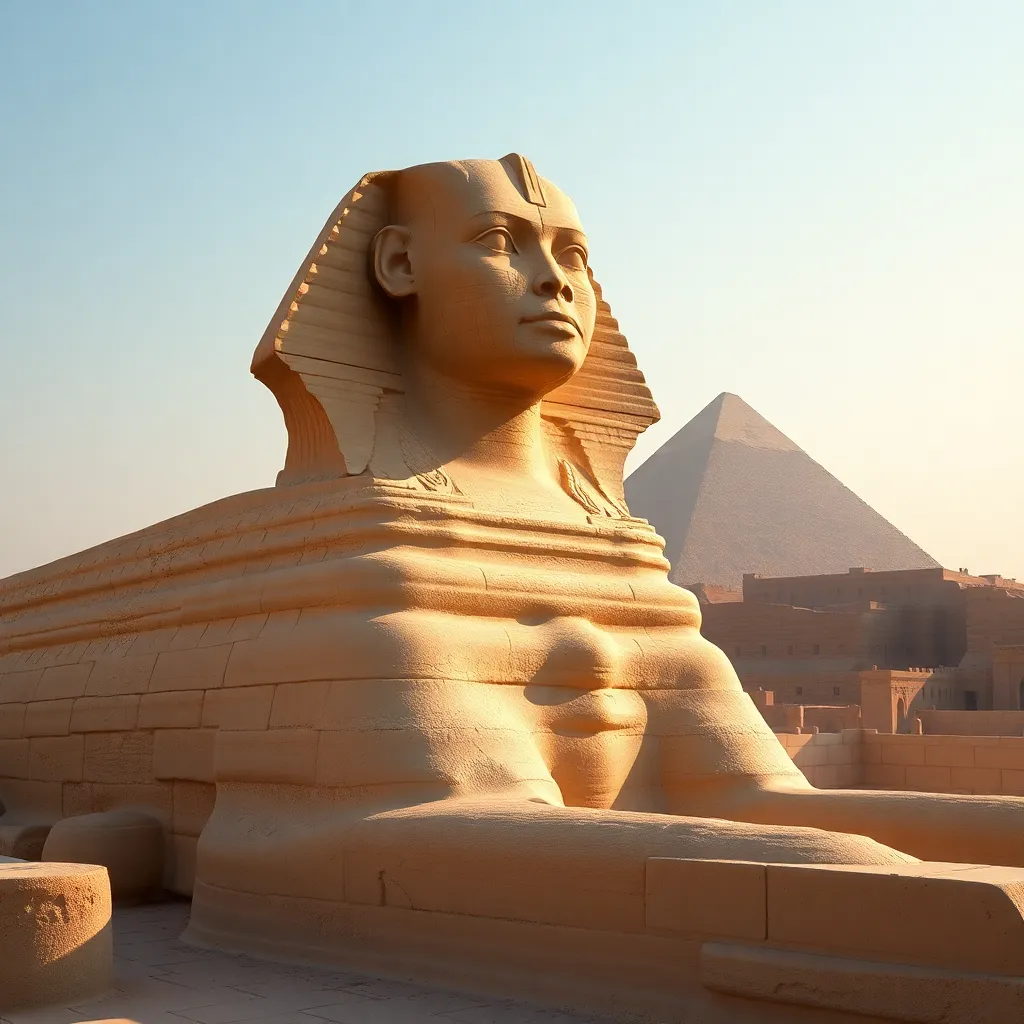The Sphinx: A Timeless Symbol of Enlightenment
I. Introduction
The Great Sphinx of Giza, a monumental statue with the body of a lion and the head of a human, stands as one of the most iconic symbols of Ancient Egypt. Its historical significance stretches back thousands of years, representing a convergence of art, architecture, and mythology. In this article, we will explore the Sphinx not just as an architectural marvel but as a profound symbol of enlightenment that resonates through the ages.
II. Historical Background of the Sphinx
A. Origins of the Sphinx in Ancient Egypt
The origins of the Sphinx are shrouded in mystery, with most scholars dating its construction to the reign of Pharaoh Khafre around 2500 BCE. It was carved from a single block of limestone and originally stood near the pyramids of Giza. The Sphinx has long been associated with the sun god Ra and the pharaohs, embodying their divine power and connection to the gods.
B. The architectural and artistic significance of the Sphinx
The Sphinx is not merely a statue; it is a testament to the architectural ingenuity of the Ancient Egyptians. Its size, measuring about 66 feet high and 240 feet long, makes it the largest monolithic statue in the world. The artistry involved in its creation reflects the advanced skills of ancient sculptors. The detailed features of the Sphinx, although eroded over time, reveal the sophistication of Egyptian art.
III. The Symbolism of the Sphinx
A. The duality of its form: human intellect and animal instinct
The Sphinx embodies a duality that is central to its symbolism. The human head represents intellect, wisdom, and the rational mind, while the lion’s body symbolizes strength, courage, and instinct. This combination serves as a reminder of the balance between intellect and instinct, urging individuals to harmonize their thinking with their primal nature.
B. The Sphinx in mythology and its connection to wisdom
In mythology, the Sphinx often poses riddles, representing the mysteries of life and knowledge. The most famous riddle, “What walks on four legs in the morning, two legs at noon, and three legs in the evening?” exemplifies the Sphinx’s role as a guardian of wisdom, challenging seekers of truth to think deeply and critically.
IV. The Sphinx and Philosophical Enlightenment
A. The Sphinx in the context of ancient philosophical thought
The Sphinx has been referenced in various philosophical discourses throughout history. In ancient Greek philosophy, for instance, the Sphinx is often associated with the pursuit of knowledge and the importance of questioning. Philosophers like Socrates viewed the act of questioning as a pathway to enlightenment, paralleling the Sphinx’s riddles that demand thoughtful consideration.
B. Representations of knowledge and mystery in philosophical traditions
Across different philosophical traditions, the Sphinx represents the enigmatic nature of truth. It embodies the idea that knowledge is often hidden, requiring effort and insight to uncover. This perspective encourages individuals to embrace the journey of discovery, reflecting the philosophical notion that enlightenment is a process rather than a destination.
V. The Sphinx in Art and Literature
A. Depictions of the Sphinx in ancient and modern art
The Sphinx has inspired countless artists throughout history, from ancient Egyptian carvings to modern interpretations. In ancient art, the Sphinx is often depicted alongside pharaohs, symbolizing their divine protection. In modern art, it appears in various forms, reflecting themes of mystery and wisdom.
B. The Sphinx as a motif in literature and its implications
Literature has also drawn heavily on the symbolism of the Sphinx. From Oedipus Rex to contemporary novels, the Sphinx serves as a metaphor for the challenges of knowledge and the pursuit of truth. Its presence in storytelling often signifies a character’s journey towards enlightenment, emphasizing the transformative power of wisdom.
VI. The Sphinx in Popular Culture
A. Contemporary interpretations and representations in media
In today’s media, the Sphinx remains a potent symbol. Movies, television shows, and video games often feature Sphinx-like characters or draw on its mystique to represent challenges to be overcome. These modern interpretations keep the Sphinx relevant, portraying it as a timeless guardian of knowledge.
B. The Sphinx as a symbol in modern movements for enlightenment
The Sphinx has also been adopted by various movements focused on enlightenment and self-discovery. Its image is often used in contexts that promote philosophical inquiry, spirituality, and personal growth, reinforcing its status as a beacon of wisdom in contemporary society.
VII. Preservation and Conservation of the Sphinx
A. Efforts to protect and preserve the Sphinx for future generations
Protecting the Sphinx has become a priority for archaeologists and conservationists. Various initiatives have been launched to mitigate the effects of erosion, pollution, and tourism. These efforts include:
- Regular cleaning and maintenance.
- Stabilization of the surrounding environment.
- Research into sustainable tourism practices.
B. The impact of tourism on the Sphinx and its surroundings
While tourism provides economic benefits, it also poses challenges to the preservation of the Sphinx. Increased foot traffic and environmental degradation can threaten its structural integrity. Balancing tourism with conservation is essential to ensure that this monumental symbol of enlightenment endures for future generations.
VIII. Conclusion
The Sphinx stands as a timeless symbol of enlightenment, embodying the quest for knowledge and the balance between intellect and instinct. Its rich history, profound symbolism, and enduring presence in art, literature, and popular culture highlight its significance across millennia. As we reflect on the legacy of the Sphinx, we recognize its continued relevance in our pursuit of wisdom and understanding in today’s complex world.




